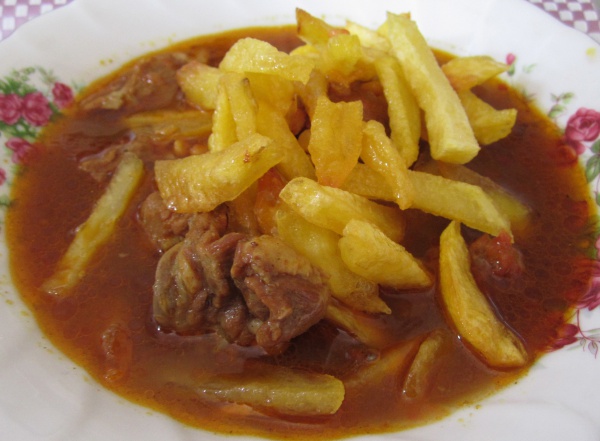Facts About Gheimeh
Gheimeh, also known as Qeema, is a cherished Iranian stew traditionally made with mutton, tomatoes, split peas, onions, and dried lime. This quintessential dish is often garnished with eggplant or saffron-infused fried potatoes and is typically served with rice. The term "gheimeh" originates from the Classical Persian word "qîmâ" which itself is derived from the Turkic "qıyma" meaning minced meat—a term also prevalent in Urdu, Turkish, and Greek.
In Iraq, there is a distinguished variation called Iraqi Qeema, featuring finely diced meat and crushed split peas. This version holds special significance during the annual Āshūrā commemorations, where it is prepared in large quantities for communal gatherings.
In Iran, Gheimeh showcases numerous regional adaptations. For example, Gheimeh sibzamini is accompanied by thin-cut French fries, while Gheimeh bademjan is enriched with pan-fried eggplants. Another exquisite variant is Gheimeh nesar from Qazvin, which includes almonds and fried onions for added flavor.
Additional notable variations include Pichagh Gheimeh from Ardabil, which also incorporates almonds and fried onions, and Gheimeh rashti from Rasht, recognized for its tangy pomegranate paste. In the Persian Gulf region, Gheimeh nokhoud substitutes split peas with chickpeas. Other variations like Gheimeh kadou with squash, Gheimeh beh with quinces, and Gheimeh bamieh—an enticing combination of okra, lemon juice, and cinnamon—further enrich the diversity of this dish.
Each of these regional adaptations offers a unique interpretation of the traditional Gheimeh stew, reinforcing its status as a versatile and deeply treasured dish throughout Iran and beyond.

 Azerbaijan
Azerbaijan